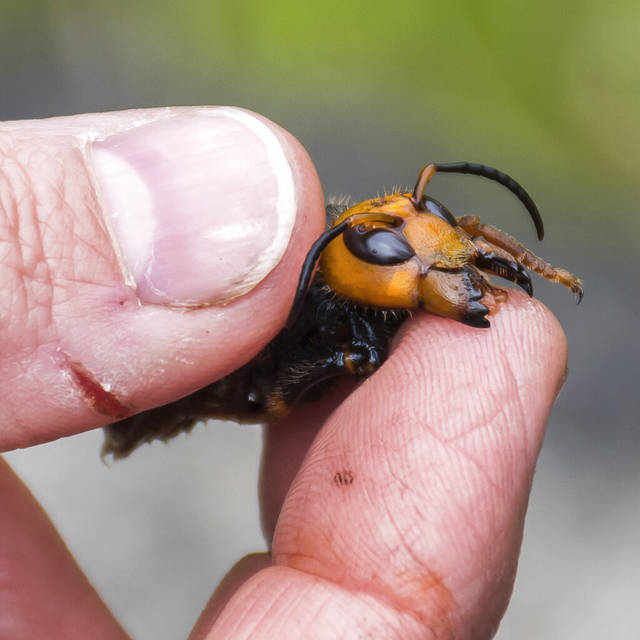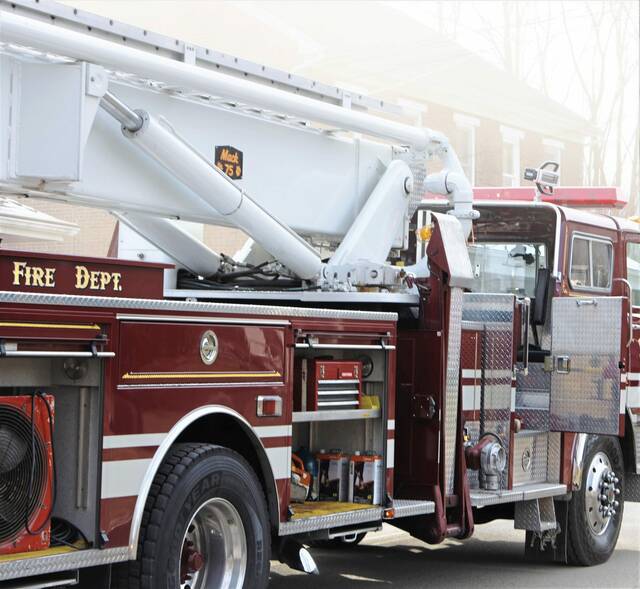If they follow their Japanese counterparts, maybe U.S. honeybees could surround and fry an invading Asian giant “murder hornet” entering its hive, according to a Carnegie Museum of Natural History expert.
Agriculture authorities in Washington State are creating a national buzz trying to eradicate the aggressive and invading Asian giant “murder” hornet. At nearly 2 inches long — about the size of a human thumb — the buzzing terrors earned the nickname because of their habit of decapitating honeybees. They can easily destroy bee colonies with their tactics.
But the bees are collectively fighting back.
In a phenomenon known as “heat balling,” honeybees in Japan have been documented surrounding the predatory Asian giant hornet. The accumulated motion produces enough heat to kill the aggressive insect, said John Wenzel, director of the Carnegie Museum of Natural History’s Powdermill Nature Reserve in Rector.
“It works in Japan to kill the Asian giant hornet,” Wenzel said. “It will be interesting if our bees can do it, too.”
The Asian giant hornet has not been detected locally — and is not expected anytime soon.
“It’s not Pennsylvania’s next plague,” said Shannon Powers, press secretary for the Pennsylvania Department of Agriculture. However, the hornet has been on the state’s radar because of the damage it could inflict on honeybees.
The state does not want to see such an aggressive hornet species to take out local honeybees, as populations are already down. Pennsylvania lost 52% of it bee colonies in the winter of 2016-17, according to a report from the PA Pollinator Protection Plan.
“We are still fighting our way back from that,” Powers said.
But how much a danger the hornet will pose in the United States is unknown.
“They’re going to spread, no doubt,” Wenzel said. “But whether they get this far is yet to be seen.”
If they are found in the region, it will be because someone accidentally brought one in.
Wenzel has been following the hornets through his colleague in Japan, Masato Ono, who is one of the world’s experts on the insect. He noted that because of the insect’s size, Ono wears a hazmat suit instead of traditional beekeeper garb when studying the world’s largest hornet.
“These are large venomous animals that can cause distress for people,” he said. The fact that the giant hornet reportedly causes about 50 deaths annually in Japan is significant.
This hornet is a triple threat as it is fast, agile and highly intelligent.
“They remember where they had food once before,” he said, “and they will go back for more.”
With “heat balling,” the honeybees are matching their smarts. When an Asian giant hornet enters a hive, several hundred honeybees will surround it, creating a big ball. Vibrating their wings en masse, they generate heat that raises the temperature to about 115 degrees for up to 20 minutes.
“That will kill the hornet — and that would kill you, too,” Wenzel said.
Recent news stories about so-called murder hornets have prompted calls to the state Department of Agriculture of possible sightings, but none have panned out, Powers said. There are other large insects, such as the European hornet and the cicada killer wasps.
The Pennsylvania Department of Agriculture encourages people to report any suspect sightings of the Asian giant hornet by sending an email to badbug@pa.gov or calling 1-866-253-7189.








